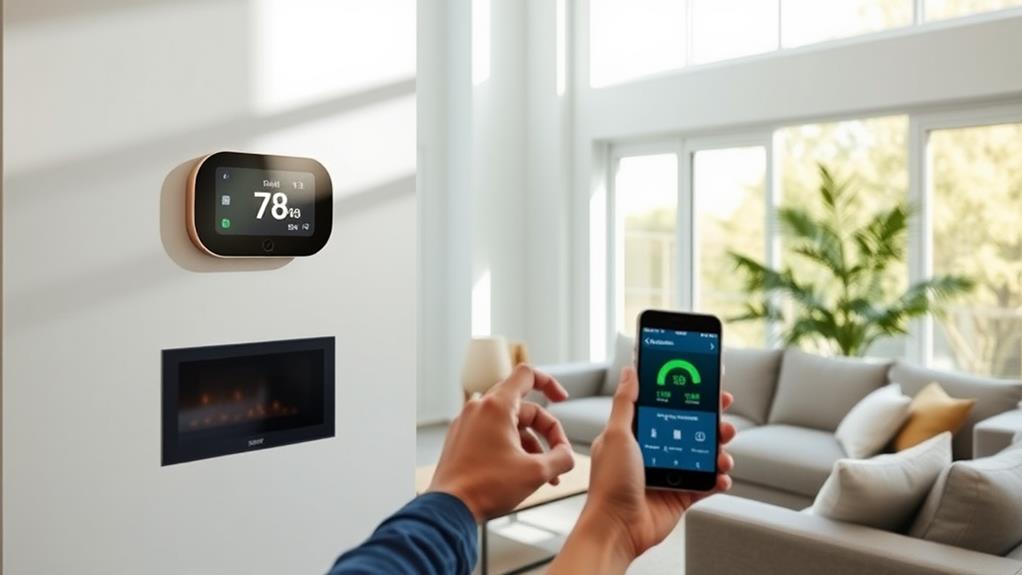Programmable and smart thermostats offer numerous benefits for your home. You'll save energy and money by automatically adjusting temperatures based on your schedule and preferences. With remote access, you can control your home's climate from anywhere using your smartphone. These devices learn your habits over time, optimizing comfort and efficiency. You can create multiple temperature zones, addressing specific needs in different areas of your house. Smart thermostats provide detailed energy reports, helping you make informed decisions about your usage. They also contribute to reducing your carbon footprint. By improving your home's comfort and efficiency, these thermostats offer advantages that extend far beyond basic temperature control.
Energy Savings
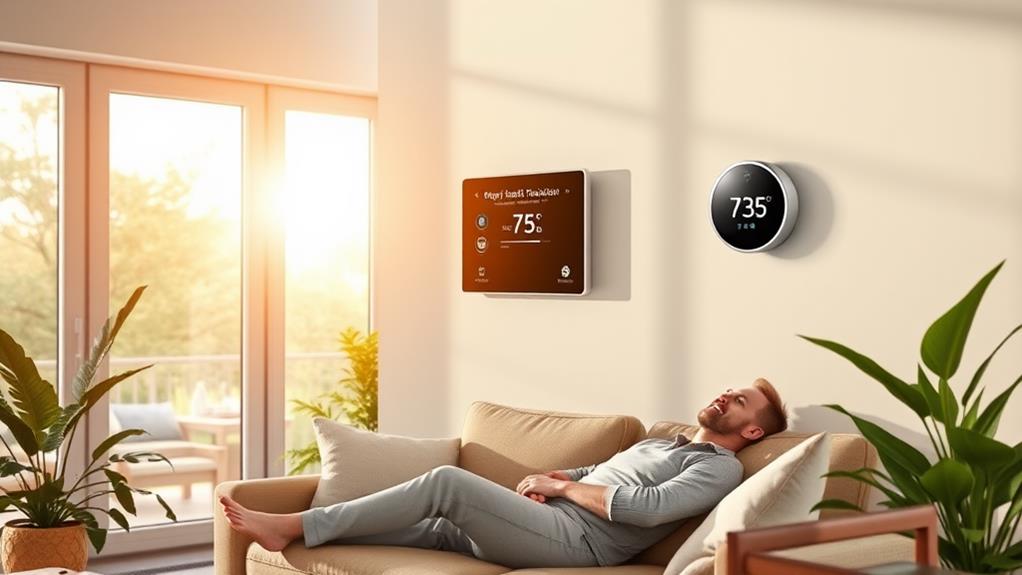
The primary benefit of programmable and smart thermostats is their ability to significantly reduce energy consumption. By automatically adjusting your home's temperature based on your schedule and preferences, these devices can optimize heating and cooling patterns, leading to substantial energy savings.
You'll save energy by setting lower temperatures when you're asleep or away from home during winter, and higher temperatures during summer. Smart thermostats take this a step further by learning your habits and making adjustments accordingly. They can also use sensors and geofencing to detect when you're away, ensuring your HVAC system isn't working unnecessarily.
Many smart thermostats provide detailed energy reports, allowing you to track your usage and identify areas for improvement. They can even suggest energy-saving adjustments based on your patterns and local weather conditions. Some models integrate with utility companies' demand response programs, helping you save more during peak energy usage times.
Customizable Scheduling
Frequently, one of the most appreciated features of programmable and smart thermostats is their customizable scheduling capability. You can set different temperature profiles for various times of the day and days of the week, tailoring your home's climate to your lifestyle. For instance, you might program the thermostat to lower the temperature while you're asleep or away at work, and then raise it just before you wake up or return home.
With smart thermostats, you'll enjoy even more flexibility. These devices learn your preferences and routines over time, automatically adjusting to your schedule. You can also control them remotely via smartphone apps, allowing you to make last-minute changes if your plans shift unexpectedly. Some models even use geofencing technology to detect when you're approaching home and adjust the temperature accordingly.
Advanced scheduling features let you create multiple zones in your home, each with its own temperature settings. This means you can keep your bedroom cool for sleeping while maintaining a warmer temperature in your living areas. By fine-tuning your home's climate control, you'll maximize both comfort and energy efficiency, ensuring you're only heating or cooling spaces when and where it's needed.
Remote Access Convenience
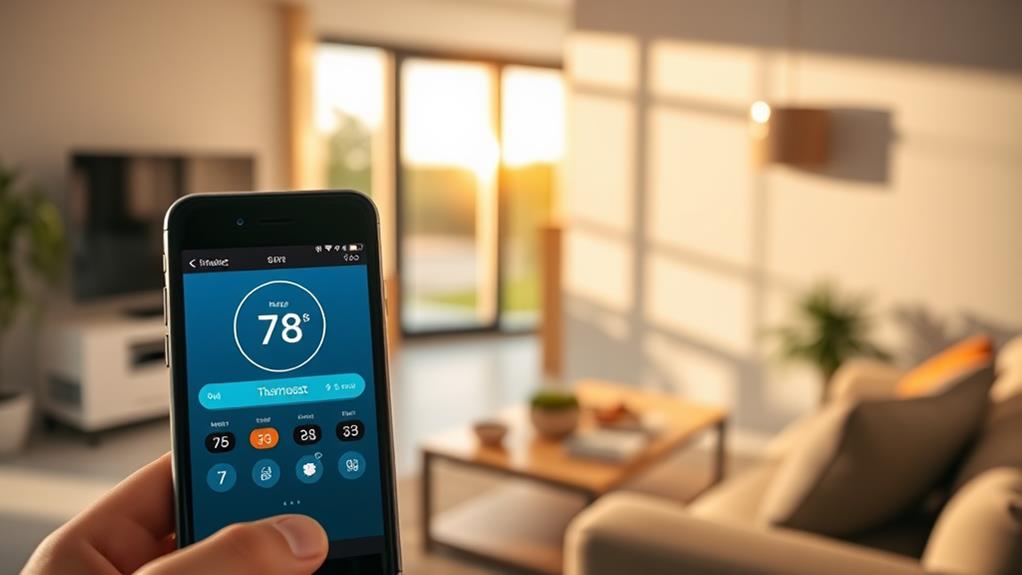
Building on the convenience of customizable scheduling, remote access takes smart thermostat functionality to the next level. With this feature, you can control your home's temperature from anywhere using your smartphone or tablet. Forgot to adjust the thermostat before leaving for vacation? No problem. You can easily lower the temperature to save energy while you're away and then raise it just before you return, ensuring a comfortable homecoming.
Remote access also allows you to monitor your home's temperature in real-time. You'll receive alerts if the temperature falls outside your set range, helping you prevent issues like frozen pipes or overheated pets. Additionally, you can make instant adjustments based on unexpected weather changes or last-minute schedule alterations.
Many smart thermostats integrate with voice assistants like Alexa or Google Home, enabling you to control your heating and cooling system hands-free. This feature is particularly useful when you're busy cooking, working, or relaxing. You can simply ask your device to adjust the temperature without interrupting your current activity. Remote access convenience not only enhances your comfort but also helps you maintain optimal energy efficiency, potentially leading to significant savings on your utility bills.
Learning Capabilities
Over time, smart thermostats with learning capabilities become attuned to your daily routines and preferences. These devices analyze your behavior patterns and adjust temperature settings accordingly. You'll notice that your thermostat starts to anticipate when you wake up, leave for work, return home, and go to bed.
The learning process is continuous, adapting to changes in your schedule and seasonal variations. If you frequently override the temperature, the thermostat will take note and modify its programming. This means you'll spend less time manually adjusting settings and more time enjoying optimal comfort.
Smart thermostats can also learn about your home's heating and cooling characteristics. They'll factor in how quickly your house reaches desired temperatures and how well it retains heat or cool air. This knowledge allows the thermostat to operate more efficiently, potentially saving you money on energy bills.
Some advanced models even incorporate weather forecasts and humidity levels into their learning algorithms. By considering these external factors, they can further optimize your home's climate control. You'll appreciate how your smart thermostat evolves to meet your needs without constant input from you.
Zoned Temperature Control
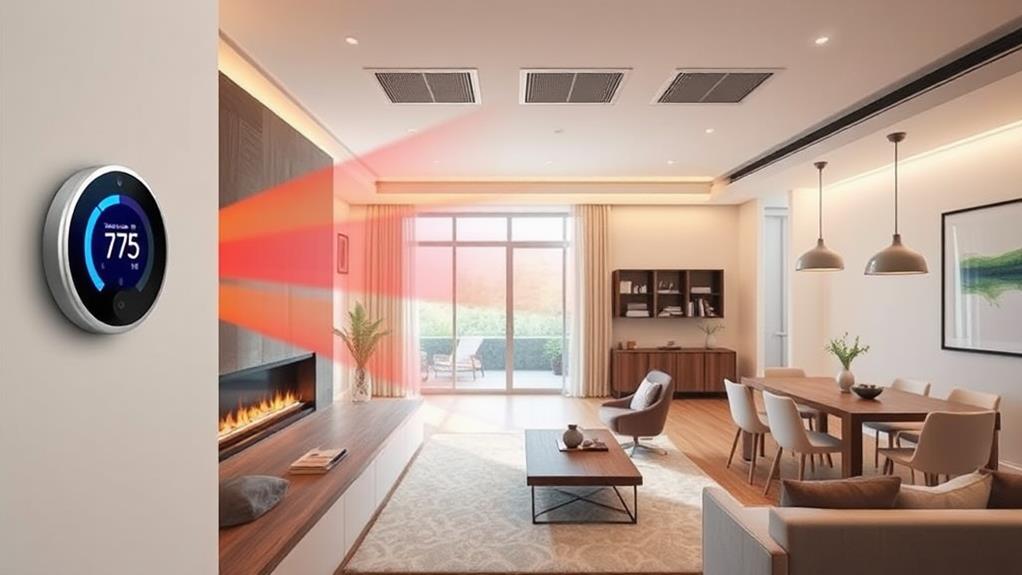
Smart thermostats shine when it comes to zoned temperature control. They allow you to create multiple temperature zones within your home, each controlled independently. This feature enables you to heat or cool specific areas based on occupancy, time of day, or personal preferences.
You'll save energy by only conditioning spaces that are in use. For example, you can set your bedroom to a comfortable sleeping temperature while keeping the rest of the house cooler at night. During the day, you might prioritize climate control in your home office or living areas.
Zoned temperature control also helps address common household issues like hot or cold spots. You can adjust the temperature in problematic areas without affecting the entire house. This customization leads to improved comfort and reduced energy waste.
Many smart thermostats integrate with smart vents or dampers, allowing for even more precise control. You can use your smartphone or voice commands to adjust individual room temperatures on the fly. Some systems even use occupancy sensors to automatically adjust zones based on where people are in the house, maximizing both comfort and efficiency.
Integration With Smart Homes
As the Internet of Things (IoT) continues to grow, smart thermostats have become a cornerstone of integrated home automation systems. These devices seamlessly connect with other smart home components, allowing you to control your home's temperature through voice commands, smartphone apps, or even automated routines. You can easily adjust your thermostat settings while away from home or have it respond to your location, ensuring optimal comfort upon arrival.
Smart thermostats can communicate with other IoT devices to enhance energy efficiency. For instance, they can work in tandem with smart blinds to maximize natural heating and cooling, or coordinate with smart lighting systems to reduce overall energy consumption. Some models even integrate with smart speakers, enabling you to adjust temperature settings through voice commands.
Detailed Energy Reports
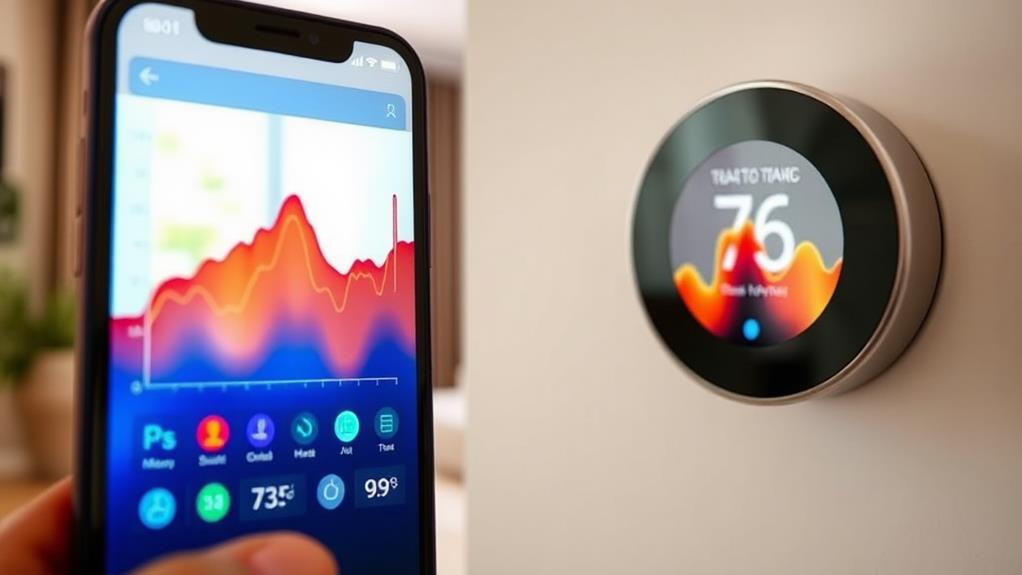
Beyond integration with other smart devices, programmable and smart thermostats offer valuable insights into your home's energy consumption. These devices provide detailed energy reports that help you understand your heating and cooling patterns, allowing you to make informed decisions about your energy usage.
You'll receive regular breakdowns of your HVAC system's performance, including runtime, temperature changes, and energy consumption. These reports often include comparisons to previous months or years, helping you track improvements over time. Some smart thermostats even offer real-time energy monitoring, so you can see the immediate impact of your temperature adjustments.
Many models provide personalized energy-saving tips based on your usage patterns. You'll learn about optimal temperature settings for different times of day and receive suggestions for reducing energy waste. Some thermostats can estimate your monthly energy costs, helping you budget more effectively.
These detailed reports also alert you to potential HVAC issues. If your system's running more frequently than usual or struggling to maintain temperature, you'll know it's time for maintenance. By leveraging this data, you can optimize your home's energy efficiency, reduce your carbon footprint, and save money on utility bills.
Improved Comfort
One of the most significant advantages of programmable and smart thermostats is their ability to enhance your home's comfort. These devices allow you to set precise temperature schedules that align with your daily routines, ensuring your living spaces are always at the ideal temperature when you need them to be.
You'll no longer have to endure chilly mornings or stuffy evenings, as your thermostat can automatically adjust to your preferred temperatures before you wake up or return home. Smart thermostats take this a step further by learning your habits and preferences over time, fine-tuning your home's climate without constant manual adjustments.
Many smart thermostats also offer zone control, allowing you to set different temperatures for various areas of your home. This feature ensures that each room is comfortable for its specific use and occupants. Additionally, these devices can account for factors like humidity and outdoor weather conditions, making real-time adjustments to maintain optimal indoor comfort.
With remote access via smartphone apps, you can easily adjust your home's temperature from anywhere, ensuring you'll always return to a comfortable environment. This combination of precision, automation, and flexibility significantly improves your overall comfort at home.
Environmental Impact
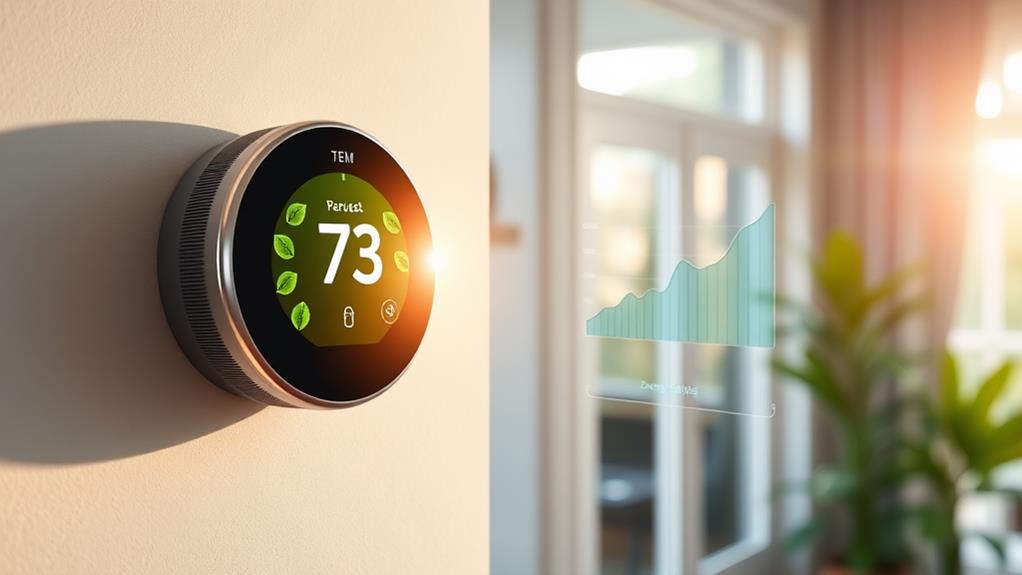
Programmable and smart thermostats offer significant environmental benefits. By optimizing your home's heating and cooling schedules, you'll reduce energy consumption and lower your carbon footprint. These devices can automatically adjust temperatures when you're away or asleep, minimizing unnecessary energy use.
Smart thermostats take energy efficiency a step further by learning your habits and preferences. They'll create custom schedules that maximize comfort while minimizing energy waste. Some models even factor in local weather forecasts to optimize your HVAC system's performance.
You'll also gain access to detailed energy reports, allowing you to track your consumption patterns and make informed decisions about your energy use. Many smart thermostats integrate with utility companies' demand response programs, helping to balance the power grid during peak hours and reduce strain on energy resources.
Conclusion
You've seen how programmable and smart thermostats can revolutionize your home's climate control. They'll save you money, increase comfort, and reduce your environmental impact. Take John's case: after installing a smart thermostat, he cut his energy bills by 20% and loved the convenience of adjusting his home's temperature from his phone while on vacation. Embrace this technology, and you'll wonder how you ever lived without it. Your wallet and the planet will thank you.
